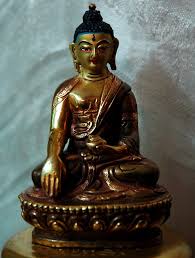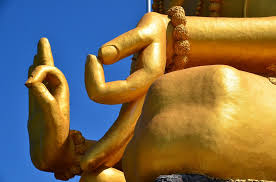Mudras have been used in the East for thousands of years, mostly in relationship with meditation. You notice Buddhist statues and artwork have the hands placed in significant poses. Mudras are known to be used as a spiritual practice and as a part of healing ceremonies for physical and mental ailments.
Mudras – Positions of the Hands
Mudras are positions of the hands that are used to influence energy flows and the moods of the body and the mind. Most mudras are centered in the positioning of your fingers and your hands.

Many mudras you may recognize and feel very comfortable with. They may feel natural to you. It could be that when you learn them they seem to make sense. The same mudras may go by many different names, but they all center in the same results.
The Hakini mudra is where all the tips of all the fingers from the left hand touch the corresponding fingers in the right hand.
The Bear grip mudra is used to intensify concentration and stimulate the heart. The left palm faces out away from the body with the thumb down. The right palm faces the body with the thumb up. The fingers are curled and hooked together at the tips.
The tip of the thumb touches the tip of the index finger. This is meant to stimulate knowledge and ability. The gift of the Guyan mudra is receptivity and calm.

The Blumnisparsha mudra is said to be the one which the Buddha summoned the Earth as a witness to his enlightenment. It is considered a gesture of unshakability. The left hand rests palm upward in the lap. The right hand hangs over the knee, palm inward with the fingers pointing toward the earth.
The Back Pain mudra is performed to keep lower back pain from escalating. The right hand has the thumb, middle finger and the pinky fingers touching. The ring finger and index finger are extended. The left hand the thumb’s upper phalanx is over the nail of the index finger.
The Acceptance mudra is one that is performed the same way with both hands. This one is particularly hard for me to perform. Could it be that I am stubborn and have a hard time with acceptance, so this is one I should practice often? The index finger is folded and tucked into the space between the thumb and the finger. The nail of the index finger should be in the fold of the thumb and the index finger. The outer corner of the thumb’s nail touches the inner lower corner of the pinky fingers’ nail. This leaves the middle finger and the ring finger sticking out above the others. It is used to overcome sadness and unnecessary to resistance.
Mudras have an interesting history and it seems that at least when you are performing them your focus changes. Perhaps there is a place for them in every day life.





